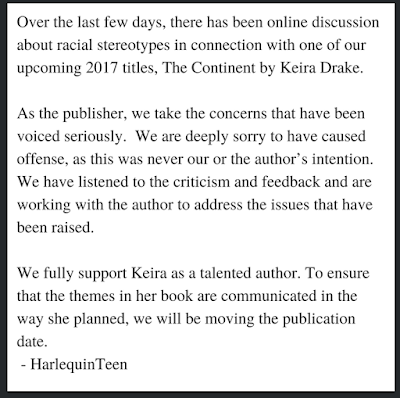Eds. Note on 3/27/17: This review (below) was posted on a popular children's literature website but removed. For details, see What Happened to A Second Perspective at All the Wonders?
A reader wrote to ask if I've seen The Secret Project by Jonah Winter and Jeanette Winter.
It was going into my "Debbie--have you seen series" but when I looked it up, I got a copy right away. Why? Because it has several starred reviews, and because its setting is so close to Nambe Pueblo (my tribal nation, and where I grew up is about 30 miles away).
The Secret Project came out in February of 2017 from Beach Lane Books, which is part of Simon and Schuster. It is a picture book for kids in grades K-3.
Here's the synopsis:
Mother-son team Jonah and Jeanette Winter bring to life one of the most secretive scientific projects in history—the creation of the atomic bomb—in this powerful and moving picture book.
At a former boy’s school in the remote desert of New Mexico, the world’s greatest scientists have gathered to work on the “Gadget,” an invention so dangerous and classified they cannot even call it by its real name. They work hard, surrounded by top security and sworn to secrecy, until finally they take their creation far out into the desert to test it, and afterward the world will never be the same.The Secret Project is getting a lot of starred reviews for its content and illustrations. Of course, I'm reading it from a Native point of view. Or, to be more specific, the point of view of a Pueblo Indian woman whose ancestors have been in that "remote desert of New Mexico" for thousands of years.
The opening pages depict a boys school, all alone in the middle of a "desert mountain landscape":
That school was the Los Alamos Ranch School. The boys shown are definitely not from the communities of northern New Mexico at that time. In the Author's Note, the school is described as being an elite private academy (elsewhere, I read that William Borrough's went there). It was, and its history is interesting, too. What bothers me about those two pages, however, is that they suggest there was nothing there at all. It is like the text in Wilder's Little House on the Prairie. All through that area, there are ancestral homes of Pueblo Indians. Depicting the school that way adds to the idea that the site where the bomb would be developed was isolated, but depicting it that way also erases Native people.
The government wanted the school and that area to do research, so the boys school had to close. The scientists moved in. We read that "nobody knows they are there." Who is nobody? It was, as the Winter's tell us, a secret project. But people who lived in the area knew it was there. They may not have known what was going on, but they knew it was there. If, by "nobody," we are meant to think "citizens of the world minus those who lived there" then yes, nobody knew (but again, nobody is relevant, even to them).
We read that in "the faraway nearby" places, people didn't know the scientists were there.
Artists, specifically, don't know they are there. The first image is meant to represent Georgia O'Keefe who lived in Abiquiu, which is about 50 miles away. It--I guess--is a "nearby" place.
Then, there's this page:
The text on that page reads "Outside the laboratory, in the faraway nearby, Hopi Indians are carving beautiful dolls out of wood as they have done for centuries."
Hopi? That's over 300 miles away in Arizona. Technically, it could be the "faraway" place the Winter's are talking about, but why go all the way there? San Ildefonso Pueblo is 17 miles away from Los Alamos. Why, I wonder, did the Winter's choose Hopi? I wonder, too, what the take-away is for people who read the word "dolls" on that page? On the next page, one of those dolls is shown hovering over the lodge where scientists are working all night. What will readers make of that?
On an ensuing page, we see the scientists take a break by going to "the nearby town" on what looks like a dirt road. That town is meant to be Santa Fe, and that particular illustration is meant to depict the plaza where Native artists sell their work (there's a Native woman shown, holding a piece of pottery). It wasn't a dirt road, though. By then, Santa Fe had paved roads. Showing it as a dirt road contributes to the isolated nature of where the scientists were doing their work, but it isn't accurate.
Like many reviewers, I think the ending is provocative. The Secret Project ends with the test of the atomic bomb, at the Trinity site. As the bomb explodes, the scientists watch from a bunker, far away. The bomb's explosion fills the last page. That's it. No more story. I think some readers will think "AWESOME" and others will think it horrible. The author's note is next. It has information about the radiation that explosion left behind, how long it will be there, and that now, studies of the cancer it caused in citizens near there, are being done.
I think children should have books about subjects like the development of the bombs that destroyed Hiroshima and Nagasaki, but they ought to be inclusive of -- in this case -- Native peoples who lived and live in and around Los Alamos. As is, the book yanks those readers out of the book. And, it misleads readers who don't know the area or its history.
I suspect that people will defend it, telling me or others that "it is important that kids know about the bomb" and that my concern over its misrepresentations are of less importance than knowing about the bomb. With that defense, however, it will be among the ever-growing pile of books in which this or that topic is more important than Native people.
The irony, of course, is that this universe of books is one in which books are written and published by people who are occupying Native homelands.
Published in 2017 by Beach Lane Books/Simon and Schuster, I do not recommend Jonah and Jeanette Winter's The Secret Project.
Update, March 22 2017, 1:45 PM
Back to insert comments from Dr. Jeff Berglund, a friend and colleague who teaches at Northern Arizona University. He said, in part (read his entire comment below):
"I have another issue with the Hopi panel: the majority of Hopi men during the 19th and through the mid-20th century had cut hair with bangs, quite distinct and different from the carver depicted. This is a simplistic stereotypical rendering of a Native man."Update, March 22 2017, 3:30 PM
Another colleague--actually, she's more of a member of my family--wrote to tell me about a 2015 Walking Tour document of Los Alamos. Take a look. Here's an enlarged piece of the document, showing item 9:
I looked around a bit and found this photo of it from a running and travel blog, whose post says it is right behind Fuller Lodge:
Update, March 23, 2017
The folks at All the Wonders asked if they could put my review on their page about The Secret Project as a "Second Perspective." That's a terrific idea! Readers there can listen to the podcast review, read interviews with the author and his mother--and read my critical review, too. Here's a peek. Go there and see it, and thanks, All the Wonders for adding it.
Update, March 25, 2017
My review is no longer at the All the Wonders website. For details, see What Happened to "A Second Perspective" at All the Wonders?














